Community articles — Reports
Write up experiments and research with LaTeX templates for project and lab reports—including layout guidelines to help guide you through the writing process.
Recent
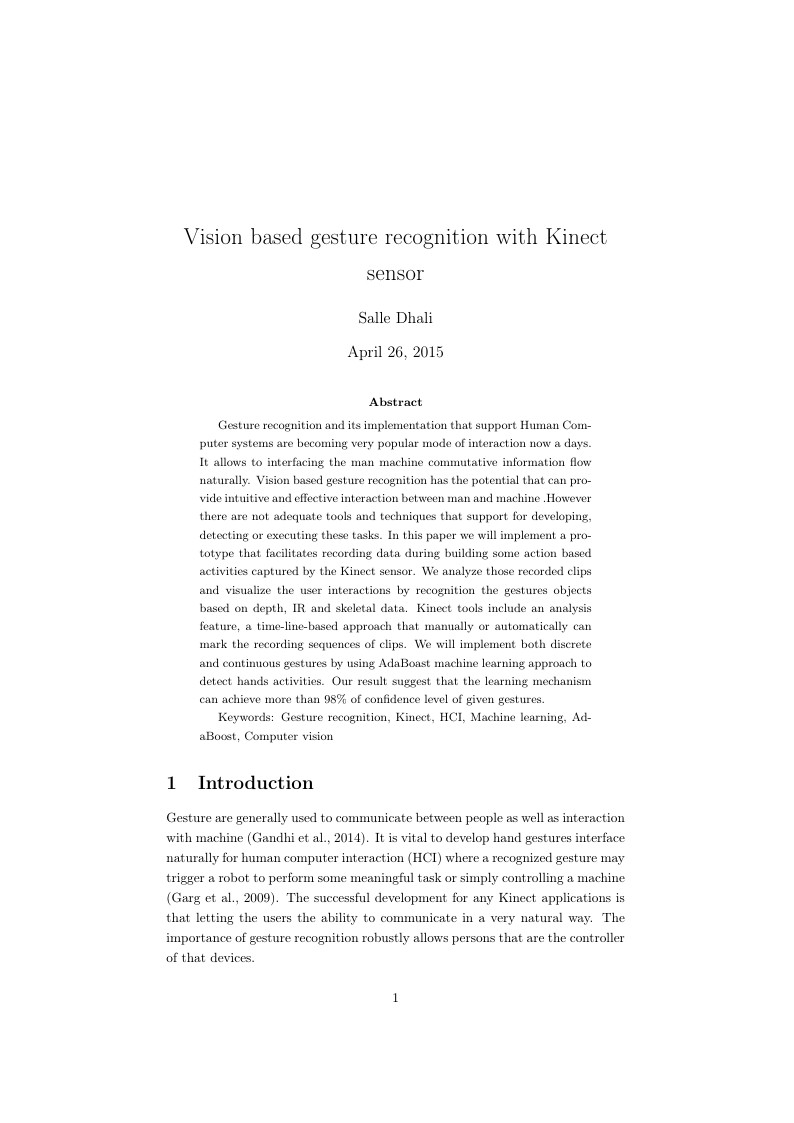
Gesture recognition and its implementation that support Human Computer systems are becoming very popular mode of interaction now a days. It allows to interfacing the man machine commutative information flow naturally. Vision based gesture recognition has the potential that can provide intuitive and effective interaction between man and machine. However there are not adequate tools and techniques that support for developing, detecting or executing these tasks. In this paper we will implement a prototype that facilitates recording data during building some action based activities captured by the Kinect sensor. We analyze those recorded clips and visualize the user interactions by recognition the gestures objects based on depth, IR and skeletal data. Kinect tools include an analysis feature, a time-line-based approach that manually or automatically can mark the recording sequences of clips. We will implement both discrete and continuous gestures by using AdaBoast machine learning approach to detect hands activities. Our result suggest that the learning mechanism can achieve more than 98% of confidence level of given gestures. Keywords: Gesture recognition, Kinect, HCI, Machine learning, AdaBoost, Computer vision
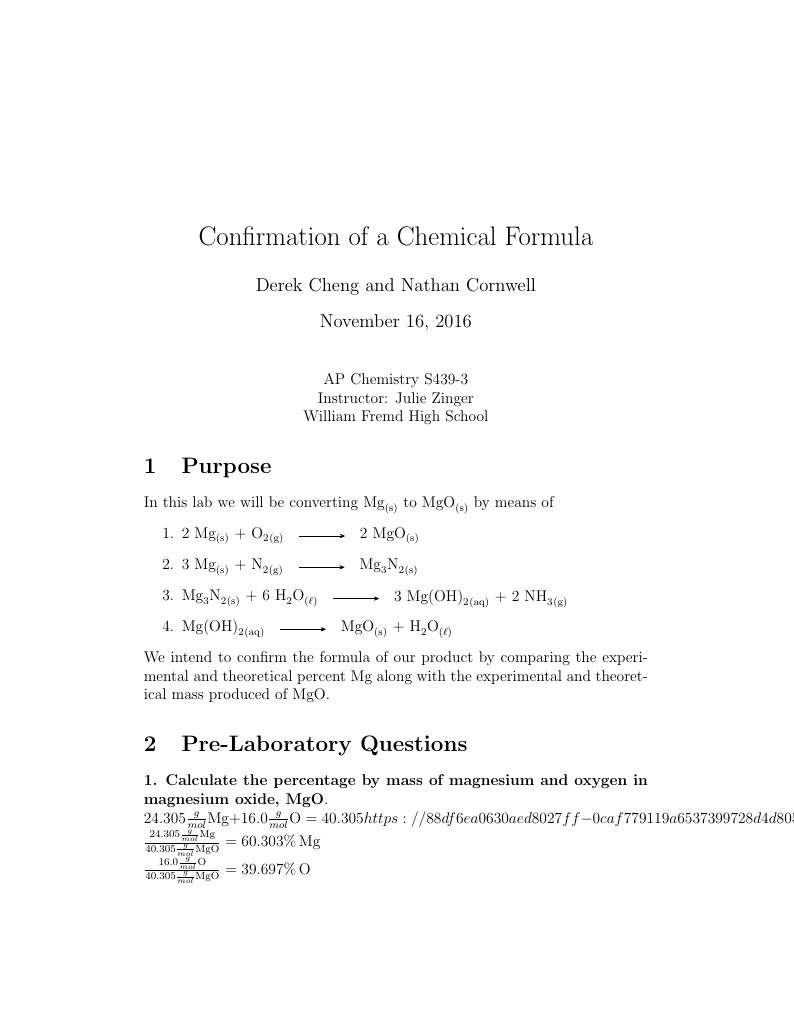
In this lab we will convert solid magnesium to solid magnesium oxide. We intend to confirm the formula of our product by comparing the experimental and theoretical percent magnesium along with the experimental and theoretical mass produced of magnesium oxide.
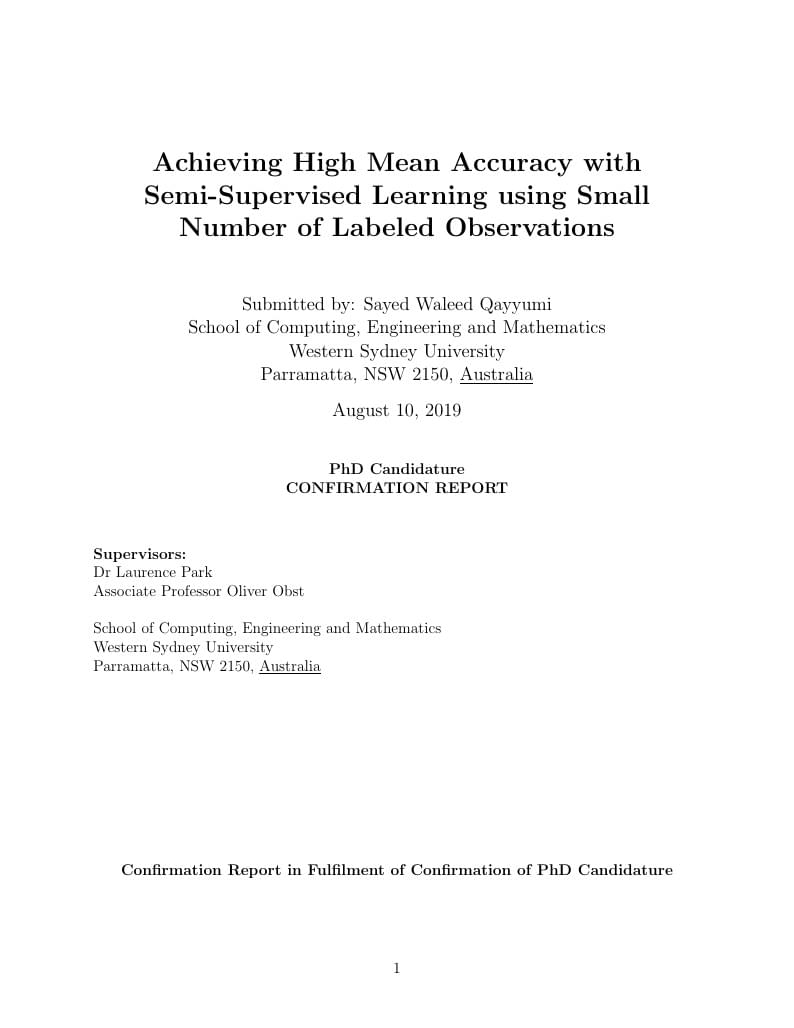
Achieving High Mean Accuracy with Semi-Supervised Learning using Small Number of Labeled Observations
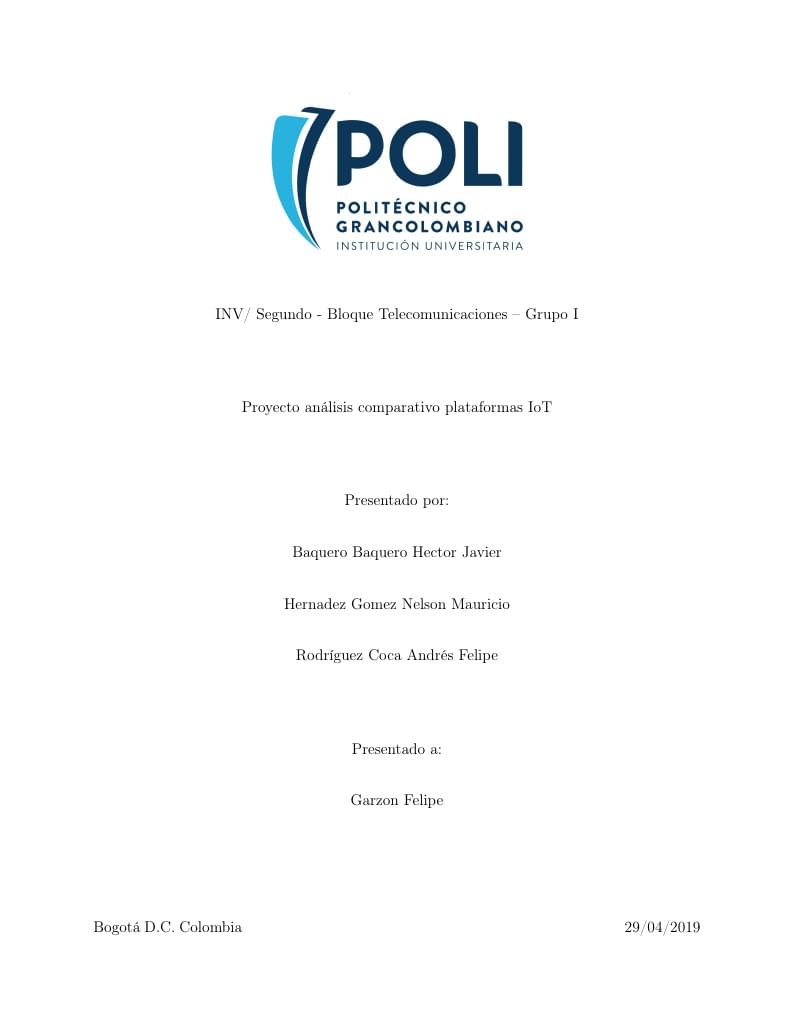
Proyecto del módulo de telecomunicaciones del Politécnico Grancolombiano donde se realiza un análisis entre las diferentes plataformas IoT expuestas en el documento A survey of IoT cloud platforms.

Standardizing Vietnamese address
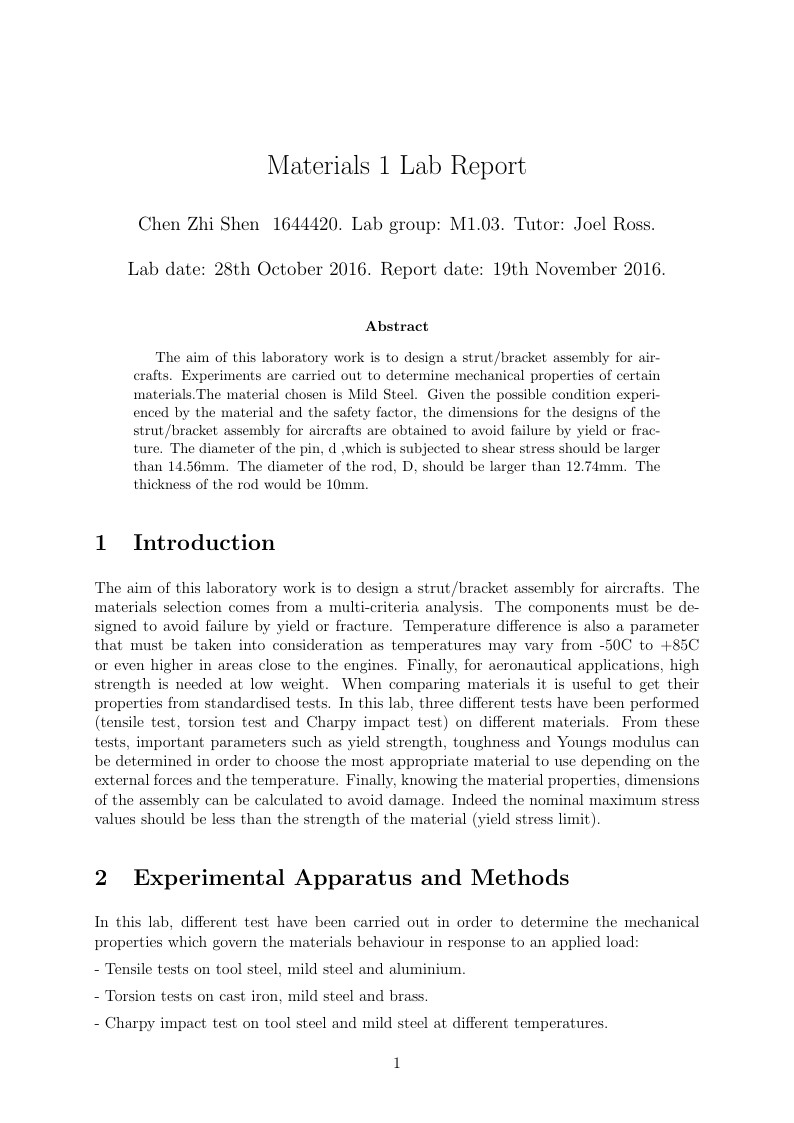
The aim of this laboratory work is to design a strut/bracket assembly for aircrafts. Experiments are carried out to determine mechanical properties of certain materials.The material chosen is Mild Steel. Given the possible condition experienced by the material and the safety factor, the dimensions for the designs of the strut/bracket assembly for aircrafts are obtained to avoid failure by yield or fracture. The diameter of the pin, d ,which is subjected to shear stress should be larger than 14.56mm. The diameter of the rod, D, should be larger than 12.74mm. The thickness of the rod would be 10mm.
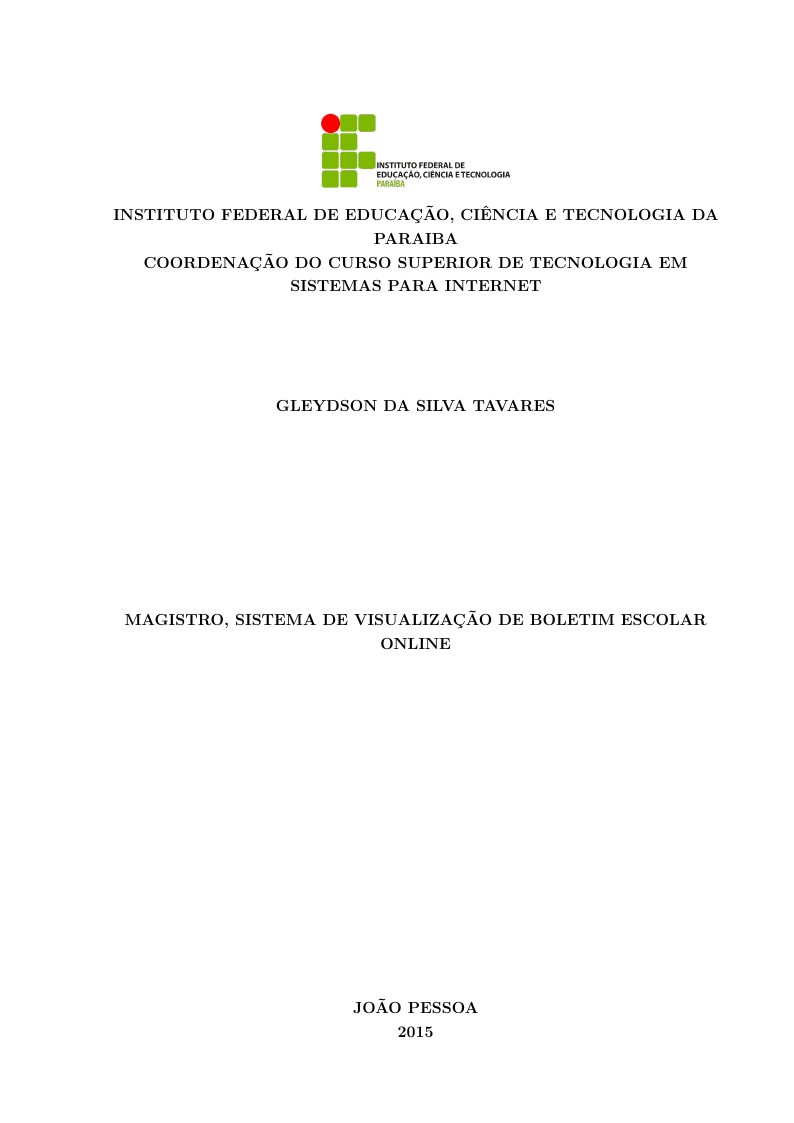
Relatório final de estágio
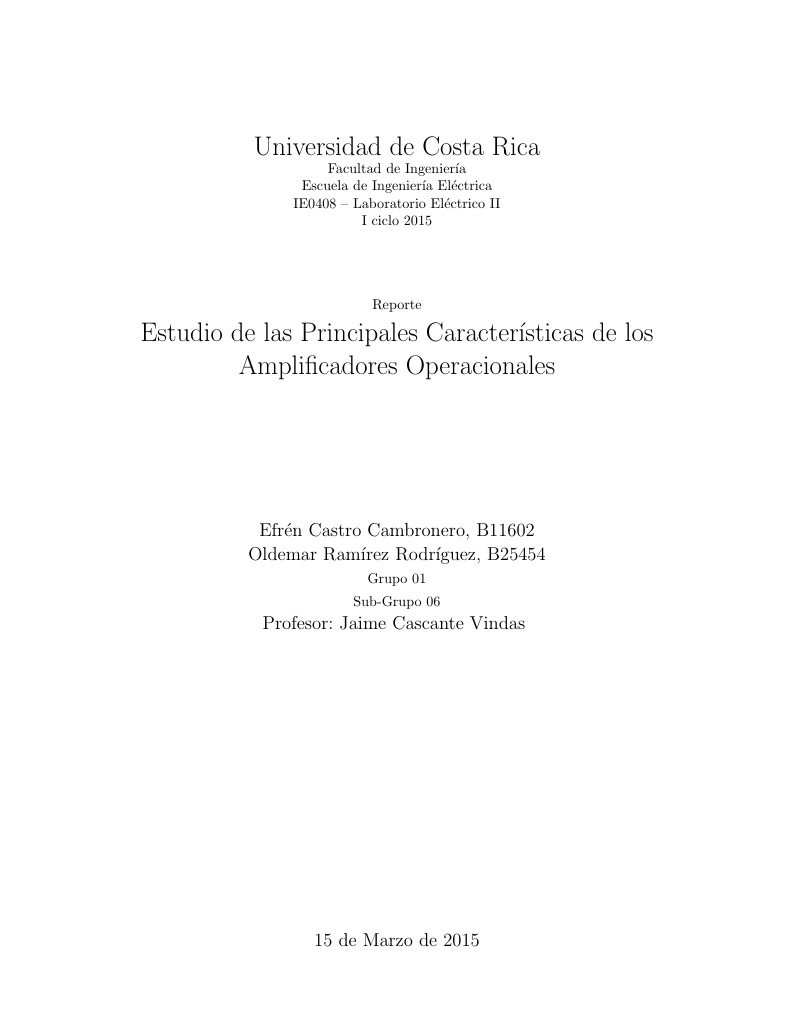
un reporte de laboratorio electrico II
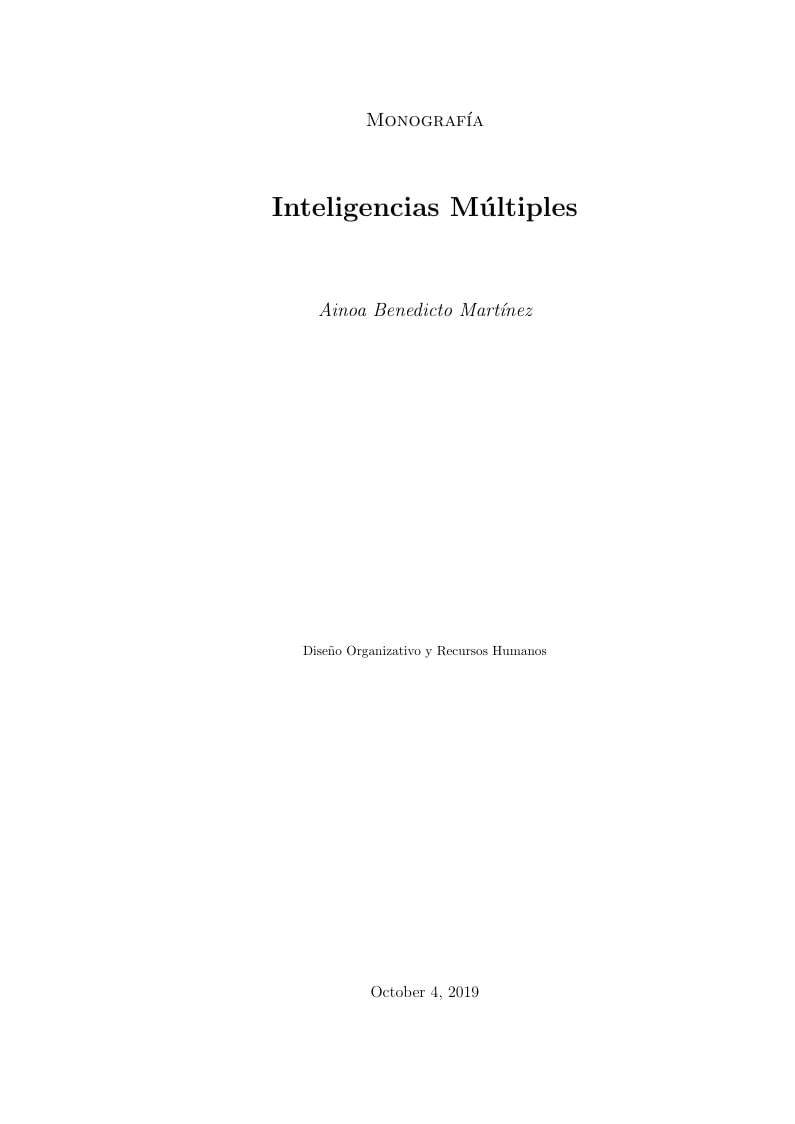
En esta monografía se pretende crear modelos matemáticos para la gestión del talento basados en el diversity problem para la creación de grupos multidisciplinares basados en las inteligencias múltiples de Gardner.
\begin
Discover why over 20 million people worldwide trust Overleaf with their work.